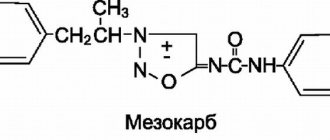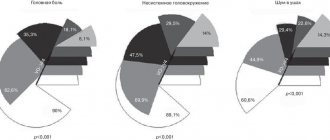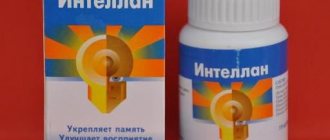Valium (also known as Diazepam) is a well-known anti-anxiety medication that belongs to the benzodiazepine group. Valium is a fine crystalline powder that is white or off-white with a slight yellow tint. It is virtually insoluble in water and difficult to dissolve in alcohol.
The effect that Valium has on the body:
- soothing;
- hypnotic;
- anti-anxiety;
- anticonvulsant;
- muscle relaxant (muscle relaxation);
- amnestic.
Form, packaging and composition
Valium is a drug that can be purchased in the form of an injection solution and also in tablet form. What is included in these products?
1 ml of injection solution contains 5 mg of diazepam. This medication goes on sale in 50 or 10 2 ml dark glass ampoules, placed in cardboard packs.
As for the tablets, they may contain 10 or 5 mg of diazepam, as well as the following additional ingredients: corn starch, anhydrous lactose, calcium stearate, gelatinized starch, dyes.
The drug "Valium" in tablet form is packaged in cardboard packs that contain cell blisters.
Pharmacodynamics and pharmacokinetics
Before turning to the mechanism of action of the drug, you should understand: “Valium - what is it?”
Valium is not described on Wikipedia, but it is a patented name for Diazepam, a drug from the benzodiazepine group that has enormous medical use.
Valium is a drug that, thanks to the anxiolytic activity of the active substance, relieves internal worries, fears, anxiety and tension. Diazepam has a dose-dependent effect on the central nervous system, that is, small doses (within 2-15 mg per day) cause a stimulating effect, and large doses (more than 15 mg per day) cause a sedative effect.
Pharmacology of medicine
Valium is a medication that exhibits anxiolytic, muscle relaxant, sedative, hypnotic and anticonvulsant properties.
Before telling you about the mechanism of action of the drug in question, you should understand what it is.
The drug "Valium" has the following patented name - "Diazepam". This is a drug belonging to the group of benzodiazepines and is of great importance in medicine.
Valium is a medication that, thanks to its anxiolytic activity, relieves internal worries, fears, anxiety and tension. Experts say that Diazepam has a dose-dependent effect on the central nervous system. In other words, in small quantities (about 2-15 mg per day) this drug causes a stimulating effect, and in large quantities (more than 15 mg per day) it causes a sedative effect.
Contraindications
When should you not use a drug like Valium? The effect of such a drug will not be as desired if you take it:
- with hypersensitivity;
- coma, shock;
- acute alcohol intoxication;
- acute forms of kidney and liver diseases;
- myasthenia gravis;
- angle-closure glaucoma;
- in childhood up to 6 months;
- during breastfeeding and in the first trimester of pregnancy.
– with hypersensitivity;
– in coma, shock;
– in case of acute alcohol intoxication with weakening of vital functions;
– in case of acute intoxication with drugs that have a depressant effect on the central nervous system;
– with myasthenia gravis;
– with angle-closure glaucoma;
– with severe COPD, acute respiratory failure;
– during pregnancy, lactation.
Kinetics
The medication "Valium", analogues of which are listed below, is absorbed from the gastrointestinal tract (when taken orally). In this case, absorption occurs by 75%, and the maximum concentration is reached after 1.5 hours.
The biological transformation of this medicine occurs in the liver. In this case, active metabolites with a half-life are formed. When prescribing the medication to infants, the effect is achieved after 30 hours, and for elderly and adults – after 100 and 48 hours, respectively. In case of liver pathologies, this indicator is extended to 4 days.
The drug in question is excreted from the human body mainly by the kidneys (90%) in the form of conjugates, as well as unchanged (2%) and together with feces (8%).
Storage conditions and periods
At room temperature.
Keep out of the reach of children.
solution for intravenous and intramuscular administration 10 mg/2 ml - 4 years.
5 mg tablets - 5 years.
tablets 10 mg - 5 years.
Do not use after the expiration date stated on the package.
In a place inaccessible to minor children. At room temperature.
No more than four years.
Store Valium solution at temperatures up to 25 degrees Celsius.
Indications
For what diseases can a patient be prescribed Valium? Reviews from experts report that this drug is indicated for use in the following conditions:
- spasms of skeletal muscles due to local injuries;
- anxiety disorders;
- myositis, arthritis, bursitis, rheumatic pelvis-spondyloarthritis, progressive chronic polyarthritis;
- tetanus;
- arterial hypertension, dysphoria, gastric and duodenal ulcers (as an additional remedy), myocardial infarction;
- insomnia;
- angina pectoris;
- spastic conditions, including cerebral palsy, arthrosis with skeletal muscle tension and athetosis;
- drug poisoning;
- vertebral syndrome;
- alcohol withdrawal syndrome with such manifestations as anxiety, tension, agitation, tremor;
- status epilepticus, relief of epileptic seizures;
- psychosomatic disorders in gynecology and obstetrics (for example, menopause and menstruation, with gestosis, to facilitate labor);
- eczema and other diseases that are accompanied by irritability and itching;
- Meniere's disease;
- paranoid-hallucinatory states, motor excitations of various origins (in psychiatry and neurology);
- general anesthesia and premedication (for example, before surgical interventions and endoscopic manipulations).
The drug "Valium": instructions for use
Only an experienced specialist should prescribe the remedy in question. For an adult patient, the oral dose of the drug should be 5-20 mg per day. This amount of medication is determined depending on the severity of the symptoms of the disease, as well as the overall clinical picture.
The maximum possible single dose of the drug is no more than 10 mg. The course of therapy with this remedy in case of anxiety should last about 6 weeks. After this period, you should contact your doctor so that he can select the minimum maintenance dosage.
The withdrawal of the drug in question is carried out gradually.
In emergency cases, this medication should be administered parenterally (intramuscularly or intravenously). In this case, a dose of 2-20 mg is used.
When administered intravenously, the drug should be administered very slowly, at a rate not exceeding 0.5–1 ml per minute.
Mode of application
For hypochondriacal and hysterical reactions, neuroses, dysphoria, phobias, Valium is taken 5-10 mg 2-3 times a day.
For alcohol withdrawal syndrome, take 10 mg of the drug 3-4 times a day in the first 24 hours. On the second and subsequent days, take 5 mg 3-4 times a day.
Weakened and elderly patients and those suffering from atherosclerosis are prescribed the drug at a dosage of 2 mg two times a day at the beginning of therapy.
For patients who cannot leave work during therapy, the recommended dose of Valium is 2.5 mg, taken 1-2 times a day or once 5 mg in the evening.
For neurological degenerative diseases, take Valium tablets 2-3 times a day, 5-10 mg.
For angina pectoris and high blood pressure, take 2-5 mg 2-3 times a day, for vertebral syndrome - 10 mg 4 times a day (with bed rest).
For arthrosis, chronic polyarthritis, rheumatic pelvispondyloarthritis, Valium is prescribed in a dose of 5 mg, taken 1-4 times a day.
In case of a heart attack, the drug is administered intramuscularly - 10 mg at the beginning of therapy, after which they switch to Valium tablets - 5-10 mg 1-3 times / day.
For premedication during defibrillation, the drug is administered intravenously - 10-30 mg.
In spastic conditions of rheumatic origin, with vertebral syndrome, 10 mg is administered intramuscularly and then switched to tablets - 5 mg 1-4 times / day.
For the treatment of menstrual, menopausal, psychosomatic disorders, gestosis, Valium is taken according to the instructions 2-3 times a day, 2-5 mg.
Treatment of preeclampsia begins with a dosage of 10-20 mg, the drug is administered intravenously, after which they switch to tablets - 5-10 mg three times a day. For eclampsia during a crisis, Valium is administered intravenously - 10-20 mg.
To facilitate labor, after the cervix has dilated 2-3 fingers, 20 mg of the drug can be administered intramuscularly. In case of placental abruption prematurely, in case of premature birth, the drug is administered intramuscularly - 20 mg and another 20 mg an hour later. The maintenance dose in these conditions is 10-20 mg 3-4 times a day. In case of placental abruption, treatment should be carried out without interruption. Reviews of Valium indicate that for maximum effectiveness, the drug should be used until the fruit is ripe.
For premedication in anesthesiology and surgery, Valium is taken according to instructions on the eve of surgery - 10-20 mg orally. An hour before anesthesia, adults are administered the drug intramuscularly - 10-20 mg, children - 2.5-10 mg. To induce anesthesia, Valium is administered intravenously - 0.2-0.5 mg/kg.
For children with reactive and psychosomatic disorders, in spastic conditions, Valium will be prescribed depending on age: 6-12 months - 1-2.5 mg or 40-200 µg/kg 3-4 times/day. Valium tablets for children 1-3 years old will be prescribed in a dosage of 1 mg; children 3-7l - 2mg, children 7l and older - 3-5mg. For status epilepticus and severe epileptic seizures, children aged 30 days - 5 liters are administered the drug intravenously: 0.2-0.5 mg every 2-5 minutes. Maximum dosage – 5 mg; Children 5 years of age and older are given 1 mg every 2-5 minutes. The maximum dosage is 10 mg.
For tetanus, muscle relaxation, children aged 30 days - 5 liters are administered the drug intramuscularly or intravenously - 1-2 mg, children 5 liters and older - 5-10 mg.
In anxiety states, Valium is administered intravenously according to the instructions at a dosage of 0.1-0.2 mg/kg, injections are repeated every 8 hours. After the symptoms disappear, take Valium tablets.
In case of motor excitation, the drug is administered intravenously, intramuscularly – 10-20 mg three times a day.
For spinal cord injuries accompanied by hemiplegia, paraplegia, and chorea, the drug is administered intramuscularly to adults in a dosage of 10-20 mg; children – 2-10 mg.
Due to the fact that the indicated dosages are average, and the prescription is carried out depending on the patient’s condition, you cannot buy Valium without a prescription and take it without consulting a doctor.
Side effects
Like any medicine, taking the drug in question can cause negative reactions. These include the following:
- bradycardia or hypotension;
- decreased concentration and reaction speed;
- addiction to the medication;
- dizziness and headache;
- development of paradoxical reactions in the form of anxiety, insomnia, hallucinations and seizures;
- memory impairment (short-term);
- adverse reactions at the injection site;
- movement disorders in the form of dysarthria and ataxia;
- kidney and liver damage, intestinal atony, decreased libido and potency (with long-term use of the drug);
- allergic reactions;
- withdrawal syndrome;
- decreased performance and muscle weakness.
When prescribing this drug to a patient, it is very important to inform him about what this medication is. After all, the drug in question is a well-known psychotropic tranquilizer, which has a number of negative effects, among which addiction and withdrawal syndrome are especially prominent.
The doctor prescribing this medicine is obliged to inform the patient about the possible harmful effects of the drug on his body, as well as offer other treatment options.
Side effects of Valium solution and tablets
At the beginning of treatment, dizziness, drowsiness, increased fatigue, disorientation, poor coordination of movements, lethargy, retrograde amnesia may occur, motor and mental reactions may slow down, and attention may deteriorate.
Judging by the reviews, Valium in rare cases causes euphoria, tremor, headache, depression, depression, confusion, weakness, dysarthria, muscle spasms, hallucinations, agitation, catalepsy, fear, irritability, anxiety, insomnia.
In addition, Valium can cause neutropenia, agranulocytosis, thrombocytopenia, anemia, dry mouth, hiccups, nausea, vomiting, constipation, heartburn, gastralgia, tachycardia, decreased blood pressure, palpitations, urinary incontinence, impaired renal function, decreased or increased libido, dysmenorrhea , allergies, depression of the nervous system, respiratory failure, phlebitis, thrombosis.
There are also reviews of Valium, which causes blurred vision, breathing, weight loss, and bulimia.
It should be borne in mind that the sedative is addictive, the condition worsens when it is abruptly discontinued, therefore it is strongly not recommended to buy Valium without a prescription and take it yourself.
Drug overdose
An overdose of the drug in question is accompanied by such an unpleasant symptom as central nervous system depression. This phenomenon can have varying severity, ranging from drowsiness to coma. Also, when taking large dosages of the drug, the patient may experience hypotension, confusion and respiratory depression.
Treatment of such conditions, provided that the patient is conscious, involves the induction of vomiting and the use of activated charcoal. If the patient is unconscious, his stomach is lavaged with a tube, and symptomatic therapy, vital signs screening, and fluid administration are performed to increase diuresis.
To stop the patient's excessive agitation, barbiturates can be prescribed.
Interaction with other medications
The drug "Valium" causes potentiation of the effects of alcohol, hypnotics, anticonvulsants, hypotensive and antihistamines, as well as neuroleptics, general anesthetics, tricyclic antidepressants, muscle relaxants and analgesics.
Psychostimulants and analeptics can significantly reduce the activity of the drug "Diazepam".
Antacids reduce the rate, but not the level, of absorption of this drug.
Microsomal oxidation inhibitors such as Cimetidine, Omeprazole, Ketoconazole, Fluoxetine and Fluvoxamine change the pharmacokinetics of the drug in question and also increase the duration of its clinical effects.
"Rifampicin" reduces con in the blood, and "Erythromycin" slows down its metabolism in the liver.
Cost of the drug
As mentioned above, you can’t buy Valium Roche in Russia in every pharmacy. The cost of this medicine is approximately a thousand rubles (per package).
The price of this product in the UK and other European countries is usually about two hundred and fifty pounds sterling per thousand tablets (10 milligrams).
To purchase a drug in your city that will meet all safety and quality requirements, experts recommend contacting the help desk, where you will be provided with complete information about its availability in pharmacies and the best prices.
Consumer reviews about the medicine
Valium is a fairly popular drug among patients, which is used as an anxiolytic, muscle relaxant, sedative, hypnotic and anticonvulsant. According to reviews from most consumers, the medication in question turns out to be highly effective for various diseases, including epilepsy, sleep disorders, anxiety conditions, and so on. Also, taking it helps to reduce manifestations in the form of agitation, tremor and eliminate hallucinations.
However, there is no such remedy that would suit everyone. Some people who have used this drug have been unhappy. They note that the medicine begins to act only after a week. In addition, with prolonged use, the medication causes a large number of adverse reactions and leads to addiction.
pharmachologic effect
Valium has a pronounced muscle relaxant, sedative, anticonvulsant and hypnotic effect.
With the use of Valium, there is a decrease in pressure, dilation of blood vessels, an increase in the pain threshold, a decrease in paroxysms (painful attacks), and a decrease in the production of gastric juice at night.
Judging by the reviews, Valium begins to act only after 2-7 days of therapy. Patients with arrhythmia, paresthesia, and cardialgia note that the positive effect of Valium is observed by the end of the first week of therapy.
For withdrawal symptoms that occur with chronic alcoholism, Valium helps to reduce tremors, agitation, eliminate hallucinations, and delirium (a mental disorder accompanied by impaired consciousness).









